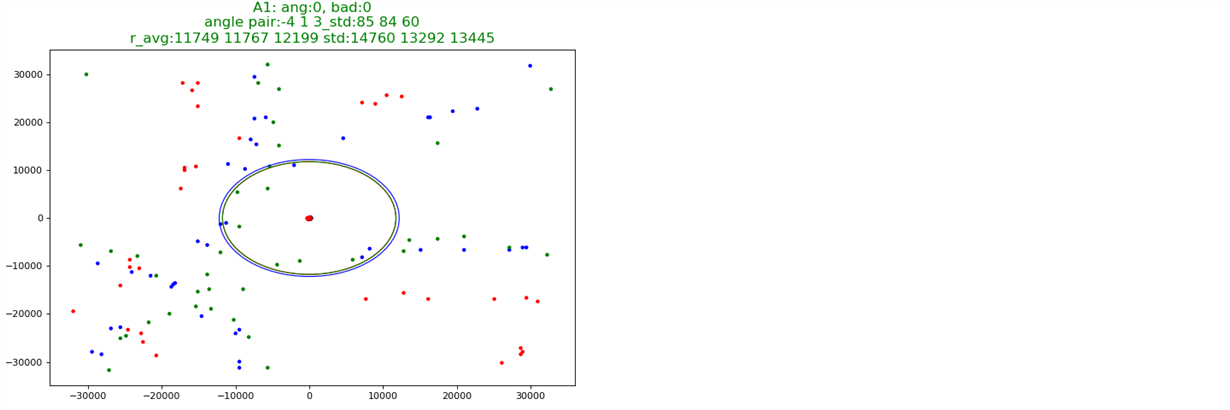Hello
We are using CC2640R2F to collect the I/Q data.
the following table shows the phase difference between 1st antenna 1st sample and 2nd antenna 1st sample.
Since the location of both TI transmitter and receiver are fixed and the AoA should be same.
Why the value of phase different (Pab-Paa/3) isn't a fixed value?
versus_avg[a][b] += Pab_rel - ((Paa_rel * abs(a-b)) /numAnt);
| 1 | Phase A1.1 S0 | Phase A1.2 S0 | Pab | Paa | Pab-Paa/3 |
| 2 | -12.28666184 | -4.136830871 | 8.149830967 | ||
| 3 | -32.98852161 | -28.44292862 | 4.545592989 | -20.70185978 | 11.44621291 |
| 4 | -59.70685047 | -58.36933859 | 1.337511879 | -26.71832885 | 10.2436215 |
| 5 | -83.02238151 | -88.77367214 | -5.751290631 | -23.31553104 | 2.02055305 |
| 6 | -108.1189827 | -113.0824663 | -4.963483618 | -25.09660114 | 3.402050097 |
| 7 | -136.7936449 | -136.9834767 | -0.189831759 | -28.67466228 | 9.368389001 |
| 8 | -176.6236317 | -164.6693928 | 11.95423888 | -39.82998678 | 25.23090114 |
| 9 | 175.0816193 | -178.7623208 | -353.8439401 | 351.705251 | -471.0790237 |
| 10 | 133.0666993 | 149.4817693 | 16.41507002 | -42.01491998 | 30.42004334 |
| 11 | 120.364271 | 120.1317186 | -0.232552359 | -12.7024283 | 4.00159041 |





